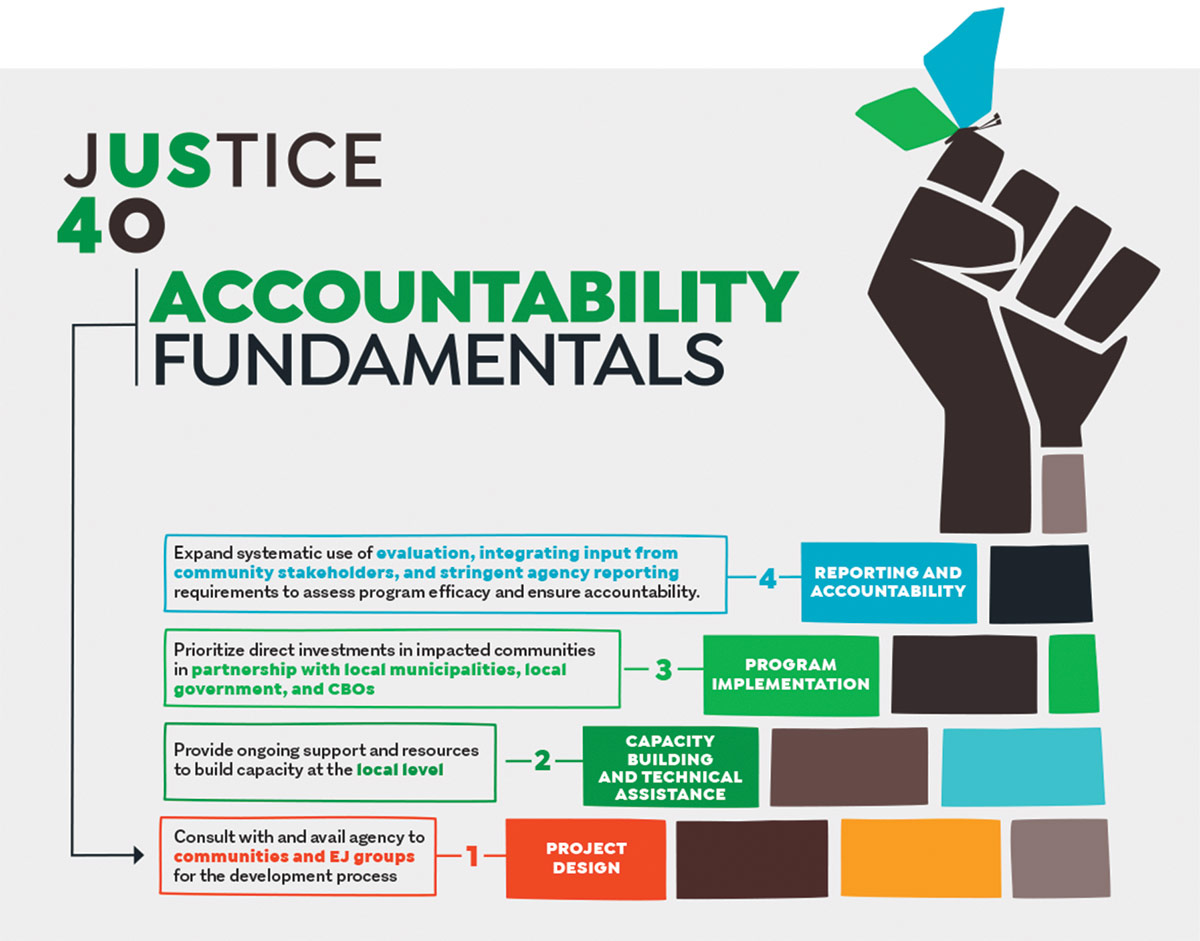By Alison Silverstein, Alison Silverstein Consulting March 23, 2022

Justice40 must address inequities that hinder a sustainable, just society, and that disproportionately harm low-income and communities of color across America. © thejustice40.com
In the U.S. and worldwide, vulnerable people including low income and communities of color, the young and elderly, are experiencing disproportionately high risk and harm from natural disasters and climate events such as heat waves, flooding and extreme freezes. Thus, decarbonization and climate adaptation policies must incorporate climate justice and social equity efforts to help protect disadvantaged communities while combating climate change.
The world will need effective decarbonization efforts at massive scale to slow the worst effects of climate change. This will require both investments in large infrastructure such as transmission macrogrids and central station renewable resources, and in widely deployed distributed infrastructure like distributed generation and storage, electrification of transportation and appliances, and energy efficiency.
One of the most terrifying aspects of climate change is the speed at which the disastrous effects of global warming are accelerating. This emphasizes the need to cut greenhouse gas emissions as quickly as possible, even as many government and financial systems and institutions lack the commitment to enable andexpedite major decarbonization infrastructure investments.
Despite the rapid growth of renewable generation, the gap between what is needed for decarbonization and what is feasible is huge. We cannot build our way to timely decarbonization with large, fast physical infrastructure investments alone. Therefore, we must look at how to shift institutions and practices to allocate resources in ways that slow the rate of GHG emissions, improve the ability of power systems to be resilient in the face of extreme events, and protect the people and communities at greatest risk from these events. Our goal should be to exploit opportunities that address all three goals – lower GHGs, better grid resilience and rebalancing social inequities—simultaneously.
The most valuable opportunity is to improve the energy efficiency of the nation’s homes and businesses, prioritizing improvements and upgrades for low-income and multi-family housing and communities of color. These are the citizens facing greatest climate risks, with the least ability to prepare for and survive events like Pacific Northwest heat waves or an extended winter storm in Texas. Widespread energy efficiency improvements that improve housing and appliances could make a large dent in GHG emissions, protect human health and lives, create new jobs and grow local economies.
We must also grow the use of distributed clean electric generation and storage to reduce or displace fossil fuel use and enhance community resilience when the grid is at risk. But such community investments are more cost-effective, equity-enhancing and resilience-supporting when they support energy-efficient communities.
Good work is already under way. President Biden’s administration’s Justice40 initiative aims to deliver at least 40% of the benefits in climate and clean energy to disadvantaged communities. Organizations like the American Council for an Energy Efficient Economy have been working to identify and publicize constructive energy equity measures. New business initiatives like Reactivate aim to develop three GW of community solar energy projects over the next ten years for historically marginalized communities.
New business and societal initiatives and technology opportunities like these are emerging every day. Solar power has become an essential element of multi-faceted solutions to address decarbonization, resilience and social equity.
Visit thejustice40.com for more information.
About the Author
Alison Silverstein is an independent consultant, strategist and researcher on electric system reliability, resilience, market design, transmission, energy efficiency and technology adoption issues. She has served at the Federal Energy Regulatory Commission and the Public Utility Commission of Texas and worked for a major electric utility. Silverstein has advised states, utilities, ISOs, and non-governmental entities since 2004 and led and written several major initiatives and studies for the U.S. Department of Energy.




